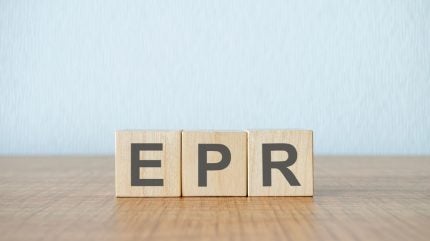
The United States is increasingly embracing Extended Producer Responsibility (EPR) laws, which hold producers accountable for the full lifecycle of their products, particularly regarding packaging waste.
As concerns over environmental sustainability grow, several US states have introduced packaging EPR legislation to tackle waste, increase recycling rates, and push producers to adopt eco-friendly designs.
This article explores the progression of packaging EPR laws across various states, highlighting the key elements of each legislation and its potential impact on the packaging industry.
A legislative response to waste management challenges
While the concept of Extended Producer Responsibility has its roots in the European Union, it has gained traction in the United States, particularly at the state level.
Packaging waste is a significant environmental challenge, contributing to landfills and pollution, especially in states with limited recycling infrastructure.
By implementing EPR laws, US states are shifting the responsibility of waste management from consumers and municipalities to producers, encouraging more sustainable packaging designs and recycling systems.
As of 2024, seven U.S. states—California, Colorado, Maine, Oregon, New Jersey, Washington, and Minnesota—have introduced packaging EPR laws.
These regulations aim to reduce the environmental impact of packaging by compelling producers to design, fund, and manage the recycling of their products.
While each state’s law has its unique features, they share common goals of reducing waste, boosting recycling rates, and promoting the use of recycled materials.
A closer look at key state laws
The rise of packaging EPR laws in the U.S. began with Maine and Oregon in 2021, followed by other states adopting similar measures. Let’s delve into some of the most prominent state laws currently in effect.
California: SB 54 Plastic Pollution Prevention and Packaging Producer Responsibility Act
California’s SB 54, passed in 2022, is among the most comprehensive packaging EPR laws in the country.
It mandates that by 2032, 100% of packaging must be recyclable or compostable, 65% of single-use plastic packaging must be recycled, and plastic packaging use must be reduced by 25%.
Producers are required to establish a Producer Responsibility Organization (PRO) that will oversee the state’s recycling efforts.
This legislation not only targets packaging waste reduction but also serves as a catalyst for innovation within the packaging industry, encouraging the design of more sustainable materials.
Maine: LD 1541 Packaging Waste Law
Maine was the first U.S. state to pass a packaging-specific EPR law in 2021. This legislation shifts the financial burden of packaging waste management from municipalities to producers.
Under this law, producers are responsible for the cost of recycling and managing the disposal of packaging materials, including plastics, cardboard, and other non-recyclable materials.
The ultimate goal is to reduce packaging waste entering landfills and incentivise producers to design more sustainable packaging solutions.
Minnesota: Packaging Waste and Cost Reduction Act
Minnesota’s legislation, passed in 2024, requires producers to manage the entire lifecycle of packaging materials, including paper, plastic, metal, and glass.
It mandates registration with a PRO, which will oversee waste management costs, including recycling and educational outreach.
Producers are also incentivised to use eco-friendly designs and meet specific recycling rate targets.
This law highlights Minnesota’s commitment to fostering a circular economy, where materials are reused and recycled rather than discarded.
The future of packaging EPR laws in the US
With packaging EPR laws gaining momentum across the US, other states are likely to follow suit in the coming years. The driving force behind these regulations is the need to address the growing waste crisis and create a more sustainable, circular economy.
States such as Washington and New Jersey have already introduced laws focusing on recycled content and plastic reduction, and these trends are expected to expand nationwide.
As businesses navigate these new regulations, they must adapt their operations to ensure compliance. This shift presents both challenges and opportunities for the packaging industry.
On one hand, producers will need to invest in more sustainable materials and designs; on the other hand, these laws open the door for innovation and the development of eco-friendly packaging solutions.
The complexity of complying with various state EPR laws can be daunting, as each state has its own unique requirements.
However, companies that invest in sustainable packaging practices now will likely gain a competitive advantage as consumers increasingly prioritise environmentally friendly products.
The takeaway
The rise of packaging EPR laws in the U.S. marks a significant shift in how packaging waste is managed.
By holding producers accountable for the lifecycle of their products, states are incentivising more sustainable practices, reducing the burden on local municipalities, and promoting a circular economy.
As more states introduce similar legislation, the packaging industry must embrace these changes and lead the way in creating innovative, eco-friendly solutions that benefit both businesses and the environment.



